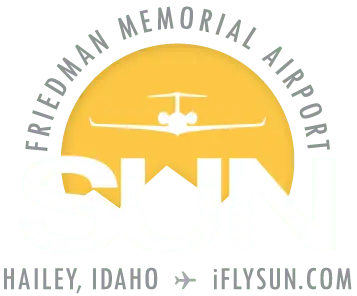And now for some good news!
If there ever was a year that deserved a big ole hat tip from Rod Serling, then 2020 would have to be it. However, I am delighted to report that as of Sept. 9, there is some good news to report as it relates to the airport – the Federal Aviation Administration has officially given SUN’s new instrument approach procedure, which has been in the works for the past two years, the go ahead. What does this mean? Well, we are expecting fewer—yes, I said fewer—weather-related
diversions this winter.
I can honestly tell you this news could not have come at a more critical time as our valley begins to ramp up for ski season. So, beginning this winter, Embraer E-175 jets, like those operated by our partners at Delta and United, will be able to land at SUN with significantly lower ceiling and visibility conditions versus the current approach which should result in less diversions to Twin Falls.
And that’s good news for SUN and the Wood River Valley economy.
Before you ask, the answer is no. No, aircraft using the new approach will not be lower on their approach. They will still be using the same glidepath they do now. The difference here is they will be able to descend and land with lower ceiling and visibility minimums. In fact, the ability for aircraft to land with lower minimums should actually reduce missed approaches and aircraft circling for a break in the weather to land.
How is that possible, you ask?
Through technology, commitment, and some very strong partnerships in our industry. By carefully studying things like geography, wind and weather patterns, as well as employing advancement in navigation technology, aircraft will be able to safely land in much lower visibility than in previous years. As a reminder, our partner Alaska Airlines has been using
similar, proprietary technology in their aircraft since the winter of 2016.
Think of it in terms of the navigation system in your car.
That’s a neat gadget, right? It gets you from one place to another rain, shine or fog—even on unfamiliar streets. This device guides you and your vehicle, through a series of computer- and satellite-based instructions, directly to your desired location.
The technology is similar with our new instrument approach, with some specifics that apply only to aircraft.
What makes it game-changing for SUN is that these capabilities have been tested and certified for the specific types of aircraft we see frequently at our airport.
Our unique weather conditions as well as our location in the valley create some interesting challenges for all aircraft. Our airline partners, concerned with the safety and comfort of passengers, often set minimum standards for landing at SUN. If the weather, wind, geography and fuel numbers don’t add up, then the “landing equation” directs them to divert.
SUN’s new instrument approach offers a new equation with more favorable variables that help our airline partners achieve the safety, comfort, and on-time goals. That said, this doesn’t mean we will never see another diversion. It does mean we should see fewer. However, Mother Nature still calls the shots. Just because we have a new equation doesn’t mean we can forget to make the safety numbers to add up.
If you’d like to learn more about the details, you can read about it in Emily Jones’s article in this week’s Idaho Mountain Express.
Until next time, I just want to reiterate how grateful I am to our Board, our community and to you, our airport visitors. We have some exciting things coming in 2021 and as 2020 winds down, I can’t think of a better place I’d rather be than right here at Friedman Memorial Airport.


